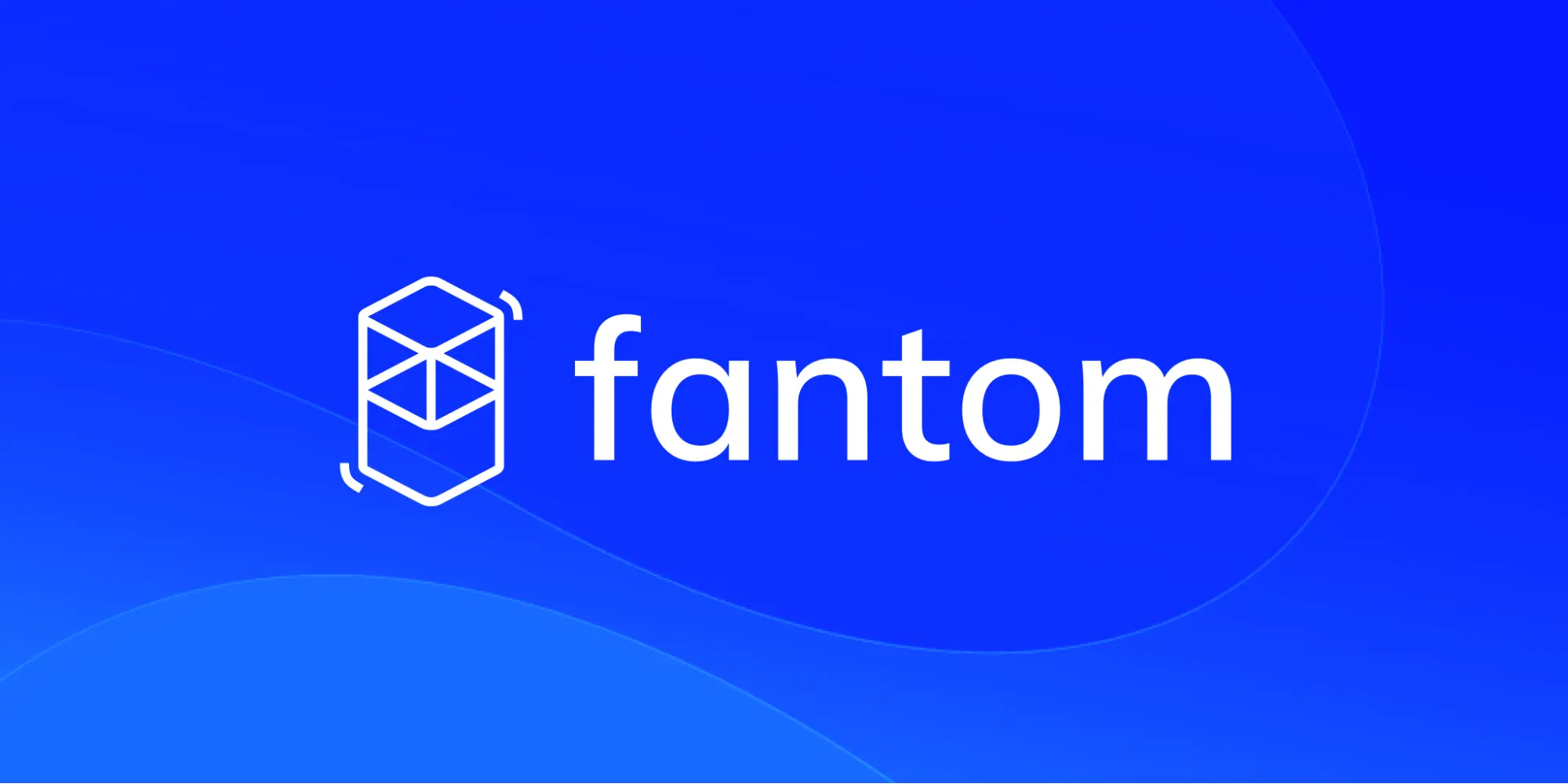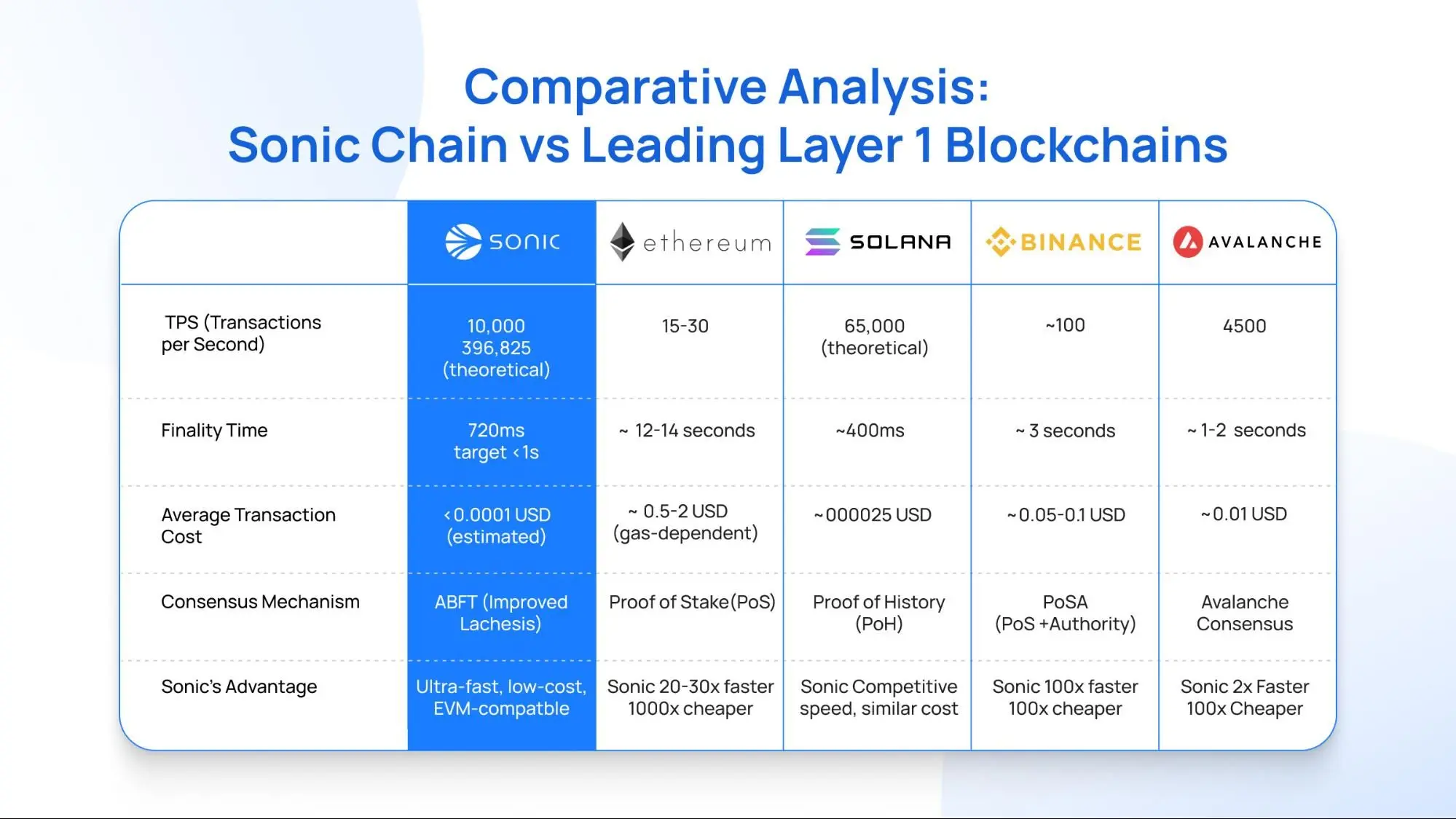In blockchain, speed, scalability, and smooth user experience aren’t optional; they’re everything. Sonic Labs is stepping up with something new: Sonic, an ultra-fast, next-generation Layer-1 blockchain that’s fully EVM-compatible.
Handling up to 400k transactions per second with sub-second finality, Sonic isn’t just fast, it’s built to completely change the game for DeFi, gaming, and Web3 apps.
But before we get into Sonic, let's take a step back into web3 history, where it all began with Fantom Opera.
The Origins: Fantom
The story of Sonic starts with Fantom, an ambitious Layer-1 that launched in 2019, well before “modular” and “monolithic” became household terms. Unlike other chains promising the moon, Fantom focused on pure speed and scalability from day one.
Its core innovation was the Lachesis consensus mechanism, a DAG-based, asynchronous Byzantine Fault Tolerant (aBFT) protocol that allowed near-instant finality, low latency, and sub-cent gas fees. At a time when Ethereum gas wars were pricing out most users, Fantom quietly positioned itself as the underdog chain for builders and yield farmers who needed speed and cost-efficiency without sacrificing security.

The Cronje Effect
Fantom’s breakout moment wasn’t purely technical, it was cultural. And that culture was shaped by one man, Andre Cronje.
The South African developer became a cult figure in crypto almost overnight when he launched Yearn. Finance (YFI) in 2020, a protocol that automated yield farming and distributed its token with zero pre-sale or VC allocation. YFI was one of the first “fair launch” tokens, and it triggered a wave of trustless, community-owned DeFi projects.
Andre didn’t just build contracts, he wrote narratives. His reputation as a no-bullshit builder attracted a loyal following of degens, mercenary capital, and developers eager to experiment.
Cronje’s deep involvement with Fantom in 2021 brought a second life to the chain. Under his influence, Fantom saw an explosion of DeFi protocols: Solidly, Scream, Tomb, Reaper Farm, and more, many of which embraced the chaotic, iterative ethos he championed. The “Fantom season” was defined by high yields, complex game theory, forks of forks, and whales chasing meta plays across every TVL leaderboard. The chain became a playground for both innovation and speculation.
Even after stepping back from public life multiple times, Andre’s fingerprints remain all over the DeFi world. He showed what’s possible when a single developer with a vision, a keyboard, and no filter can ignite an ecosystem. Sonic may be the next chapter, but it’s built on a legacy that Cronje helped write.

What Is Sonic Labs?
Sonic Labs is the team behind Sonic, a major upgrade from its predecessor Fantom Opera network. Launched in 2024, Sonic is designed to be a serious performance boost: a blockchain that’s lightning-fast, developer-friendly, and fully compatible with existing Ethereum apps.
Instead of forcing developers to start from scratch, Sonic runs Solidity and Vyper smart contracts right out of the box. On top of that, it offers ultra-low fees ( $0.001 per transaction) and a unique fee-sharing system that rewards dApp developers.
Sonic also introduces the S token, replacing Fantom’s old $FTM token at a 1:1 swap. The new setup is meant to better reward developers and users across the ecosystem.
Who is the team behind Sonic Labs
Sonic Labs, formerly known as the Fantom Foundation, is led by a team of seasoned professionals with deep roots in the blockchain ecosystem.
Michael Kong serves as the CEO of Sonic Labs. He has been instrumental in steering the project’s vision and growth since its inception.
Andre Cronje, a prominent figure in the DeFi space, holds the position of CTO at Sonic Foundation. His extensive experience and innovative approach have significantly influenced the platform’s development.
Other members that make up the Sonic Labs team are: David Richardson (Exec Chairman), Prof. Bernhard Scholz (Chief Research Officer), Sam Harcourt (BD), The Assistant (Head of Strategy), Ash V. Khatibi (Marketing Lead), Yohaan (DeFi Growth), Seg (Developer Relations), Luis Fausto (Content Lead), and Lisa (VA of APAC)
Plus, 50 more professionals from all over the world!
What Makes Sonic Different
Sonic isn’t just adding another blockchain to the pile. They’re offering real advantages that others can't offer:
Speed That Matters
Sonic delivers 400k theoretical TPS, with finality in less than a second. It keeps up with non-EVM giants like Solana, without asking developers to learn new tools or languages. And it’s built to scale even further.
Full EVM Compatibility
No need to reinvent the wheel. Sonic works with all the Ethereum tooling, Chainlink, Alchemy, MetaMask, Safe multisigs, and more. Porting apps from Ethereum or Fantom? It’s practically plug-and-play.
SonicVM and SonicDB
Behind Sonic’s performance are two major innovations:
- SonicVM: Boosts smart contract execution with “super instructions” that compress common tasks.
- SonicDB: A custom database that makes syncing nodes faster and lighter, cutting down on storage and data bloat.
Sharing the Wealth
Sonic flips the typical blockchain model by sharing up to 90% of transaction fees with dApp developers. Called the FeeM model, it’s designed to align incentives and grow a stronger ecosystem.
Built-In Bridging
The Sonic Gateway offers secure cross-chain bridges, starting with Ethereum. It’s decentralized, audited (by groups like OpenZeppelin), and has fail-safes to protect user funds. Plus, Sonic taps into Chainlink CCIP for seamless cross-chain messaging.
How Sonic Works
Sonic’s technical setup is built for speed and efficiency:
- Consensus: An upgraded Proof-of-Stake model with DAG-based parallel processing. This reduces bottlenecks and cuts down finality times.
- Execution: Smart contracts run through SonicVM, which compresses code and boosts performance.
- Data Management: SonicDB slashes node sync times by 10x and requires much less disk space compared to its predecessor, Fantom Opera.
- Cross-Chain Reach: The Sonic Gateway and Chainlink CCIP connect Sonic apps to liquidity and users across multiple blockchains.
The result? Apps on Sonic feel more like Web2 experiences, instant, responsive, and frictionless, while staying fully decentralized.
What You Can Build with Sonic
Sonic isn’t just fast for the sake of it. It’s designed to power serious applications:
DeFi at Scale
Decentralized exchanges, stablecoins, and payment apps can now offer instant transactions with almost no slippage or fees.
Gaming and NFTs
Real-time gaming and NFT minting thrive on speed. Sonic makes dynamic in-game economies and NFT marketplaces not just possible, but smooth. (Sonic even launched a Game Gems program to back gaming projects that drive engagement.)
Real-World Assets and SocialFi
From tokenizing real estate to building decentralized social networks, Sonic’s high performance makes it perfect for real-world asset platforms and SocialFi apps.
Developer Ecosystem
At launch, Sonic already had big partnerships:
- Chainlink (oracles, CCIP)
- Alchemy (developer tools)
- LayerZero (cross-chain messaging)
- Gelato (automation)
- The Graph (indexing)
- Safe (custody)
Over 100 projects were already building or migrating onto Sonic within months of mainnet going live.
Who Is Sonic For
Sonic’s platform is built with a wide range of users in mind:
- DeFi Traders: Faster, cheaper transactions mean better profit margins.
- Web3 Developers: Build dApps easily with familiar tools and earn revenue through transaction fees.
- Gamers and Game Devs: Real-time responsiveness opens new doors for Web3 games.
- Institutions: Native support for Fireblocks and Safe makes Sonic ready for serious enterprise adoption.
- Everyday Crypto Users: Tired of $10 gas fees? Sonic fixes that.

Why Sonic Stands Out
Sonic isn’t just another “fast blockchain.” It combines:
- Speed: 400k theoretical TPS and near-instant finality.
- Affordability: ~$0.001 per transaction.
- Ecosystem Support: $200M Innovator Fund and serious developer incentives.
- Security: Audited, decentralized bridges and safety nets.
- Mainstream Appeal: Even Formula 1’s Pierre Gasly is repping Sonic.

Bottom line: Sonic reimagines what an EVM-compatible blockchain should feel like.
TL;DR:
If you care about DeFi, gaming, or pushing Web3 forward, Sonic Labs deserves a spot on your radar. They’re merging Ethereum’s strengths with bleeding-edge performance, and building an ecosystem where both users and developers win.
Whether you’re looking to deploy the next big app or just want faster, cheaper blockchain transactions, Sonic is building the kind of experience the crypto world has been asking for.









